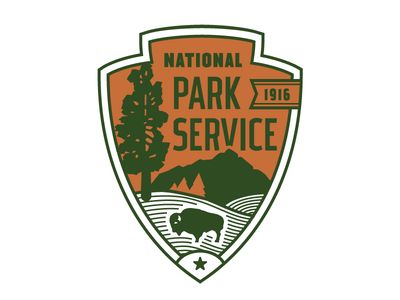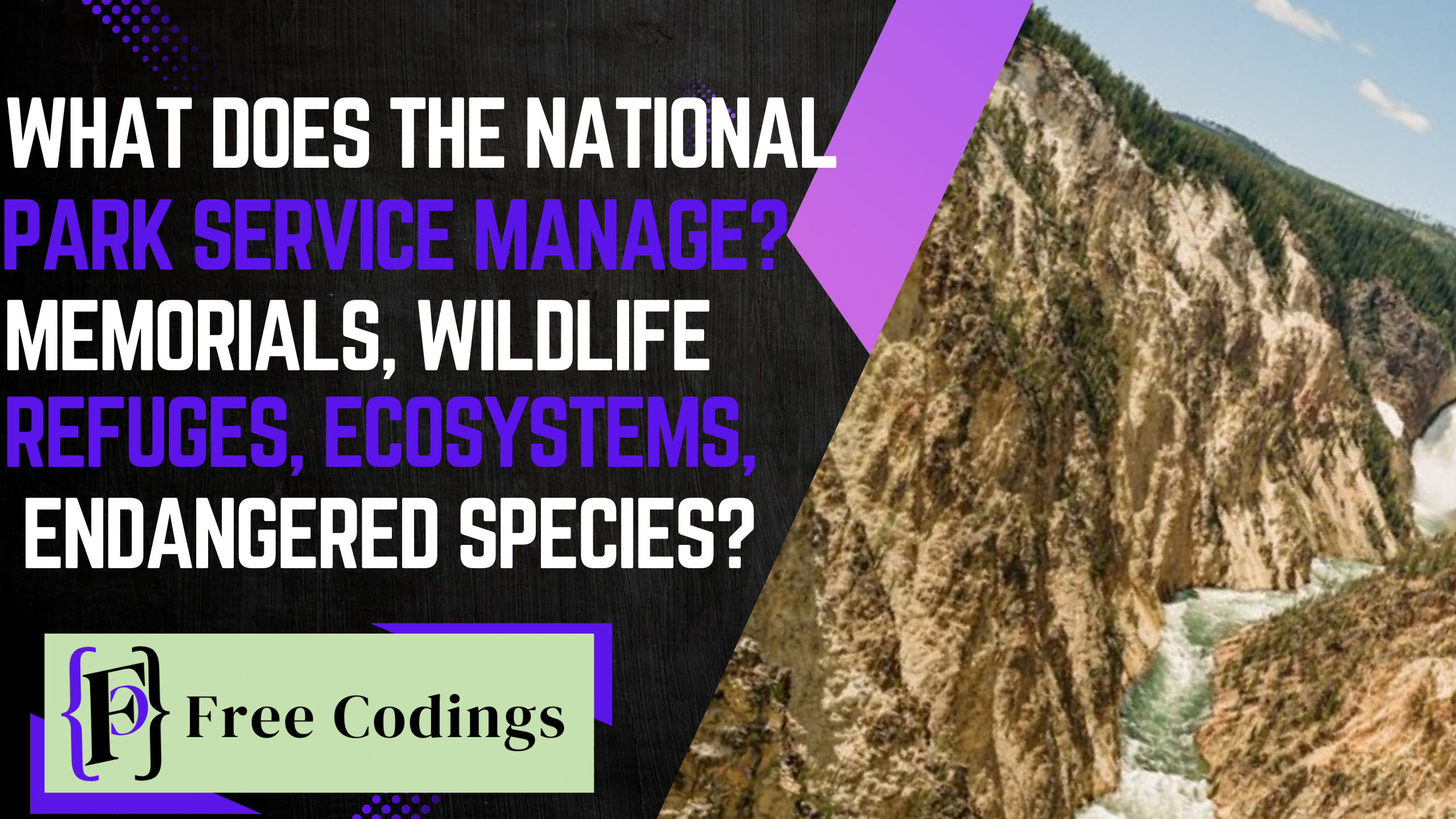What Does the National Park Service Manage? Memorials, Wildlife Refuges, Ecosystems, Endangered Species
Question:
What does the National Park Service manage? Memorials, wildlife refuges, ecosystems, endangered species.
Answer:
- The National Park Service manages monuments, wildlife habitats, ecosystems, and endangered species.
- The National Park Service maintains monuments to preserve and remember historical events and people.
- The National Park Service also manages wildlife refuges to protect wildlife and their habitats.
- Additionally, the National Park Service manages ecosystems in national parks to maintain natural balance and biodiversity.
- In addition, the National Park Service is involved in endangered species management to help protect and restore threatened wildlife populations.
What Does the National Park Service Manage?
The National Park Service (NPS) is an important organization in the United States that plays a crucial role in preserving and protecting various natural and historical sites. This agency is responsible for managing many types of places and ensuring that they are kept in good condition for future generations to enjoy. Let’s take a closer look at what the National Park Service manages, including memorials, wildlife refuges, ecosystems, and endangered species.

Managing Memorials
One of the key responsibilities of the National Park Service is managing memorials. Memorials are special places that help us remember and honor important events and people in history. For example, the Lincoln Memorial in Washington, D.C., is managed by the NPS. This iconic monument pays tribute to President Abraham Lincoln, who played a significant role in American history. By taking care of such memorials, the NPS ensures that we can visit these sites to learn about and reflect on our past.
Other notable memorials include the Martin Luther King Jr. Memorial and the World War II Memorial. These sites not only honor significant individuals and events but also provide a place for reflection and education. The NPS maintains these memorials to preserve their historical significance and ensure they remain accessible to the public.
Protecting Wildlife Refuges
Another vital aspect of the National Park Service’s work is managing wildlife refuges. Wildlife refuges are areas where animals and plants are protected. These places provide safe habitats for various species to live and thrive. The NPS works to make sure that these refuges are healthy and safe for wildlife. This includes monitoring animal populations, protecting their habitats, and sometimes even reintroducing species that have disappeared from certain areas. Wildlife refuges are essential for maintaining biodiversity and ensuring that future generations can experience the beauty of nature.
For example, the Arctic National Wildlife Refuge in Alaska is one of the largest and most well-known refuges managed by the NPS. It provides a habitat for many species, including polar bears, caribou, and migratory birds. By protecting such areas, the NPS helps ensure the survival of these species and maintains the ecological balance of the region.
Maintaining Ecosystems
The National Park Service also plays a crucial role in managing ecosystems within national parks. An ecosystem includes all the living and non-living things in a particular area, such as plants, animals, water, and soil. The NPS works to maintain the natural balance of these ecosystems. This means ensuring that all parts of the ecosystem are healthy and functioning properly. For example, in Yellowstone National Park, the NPS manages the ecosystem to keep it in a natural state. This involves activities like controlling invasive species, conducting research, and restoring damaged areas. By managing ecosystems, the NPS helps preserve the natural beauty and diversity of our national parks.
In addition to Yellowstone, the Everglades National Park in Florida is another example where the NPS actively manages the ecosystem. The Everglades is a unique and fragile ecosystem that requires careful management to protect its diverse species and water systems. The NPS works to control invasive species like the Burmese python and restore natural water flow to support the health of this important habitat.
Conserving Endangered Species
Protecting endangered species is another critical responsibility of the National Park Service. Endangered species are animals or plants that are at risk of disappearing completely. The NPS works hard to help these species survive and recover. This involves various actions, such as creating and maintaining habitats, monitoring populations, and implementing breeding programs. For instance, the California condor, a bird that was once on the brink of extinction, has been brought back from the edge thanks to the efforts of the NPS and other organizations. By focusing on endangered species, the NPS ensures that these unique and irreplaceable parts of our natural heritage are not lost forever.
Other endangered species managed by the NPS include the gray wolf in Yellowstone and the Hawaiian monk seal in the Pacific islands. The NPS collaborates with other organizations and uses scientific research to develop and implement recovery plans for these species. By doing so, they help increase population numbers and improve the chances of long-term survival for these endangered animals.
Educating the Public
In addition to managing these areas, the National Park Service also has a role in educating the public. Through visitor centers, guided tours, and educational programs, the NPS helps people understand the importance of preserving natural and historical sites. These programs provide valuable information about the history, ecology, and significance of the places managed by the NPS.
For example, the Junior Ranger Program is an initiative by the NPS to engage children and families in learning about national parks. Participants complete activities and receive a badge, helping to foster a sense of stewardship and appreciation for these protected areas. Educational efforts like this are crucial for raising awareness and encouraging the public to support conservation efforts.
Why It Matters
The work of the National Park Service is essential for several reasons. First, it helps preserve our history and heritage by maintaining memorials and historical sites. These places allow us to connect with our past and understand the events and people that have shaped our world.
Second, by managing wildlife refuges and ecosystems, the NPS helps protect the natural environment. This is important not only for the plants and animals that live there but also for us. Healthy ecosystems provide many benefits, such as clean air and water, and they offer places for people to enjoy outdoor activities.
Third, protecting endangered species is crucial for maintaining biodiversity. Each species plays a unique role in its ecosystem, and losing even one can have significant impacts on the environment. By helping endangered species recover, the NPS contributes to the overall health of our planet.
Conclusion
In conclusion, the National Park Service manages a wide range of important areas and activities. From preserving historical memorials to protecting wildlife refuges, ecosystems, and endangered species, the NPS plays a vital role in safeguarding both our natural and cultural heritage. Their work ensures that these treasures are available for us to enjoy today and for future generations to experience as well. By supporting the efforts of the National Park Service, we can help protect the places and species that make our world unique and beautiful.
For more information, you can visit the National Park Service website.





